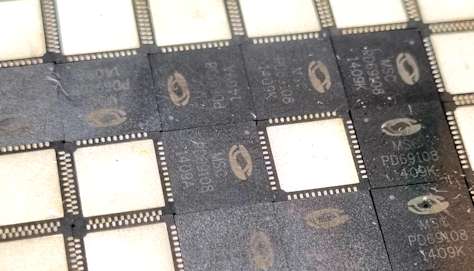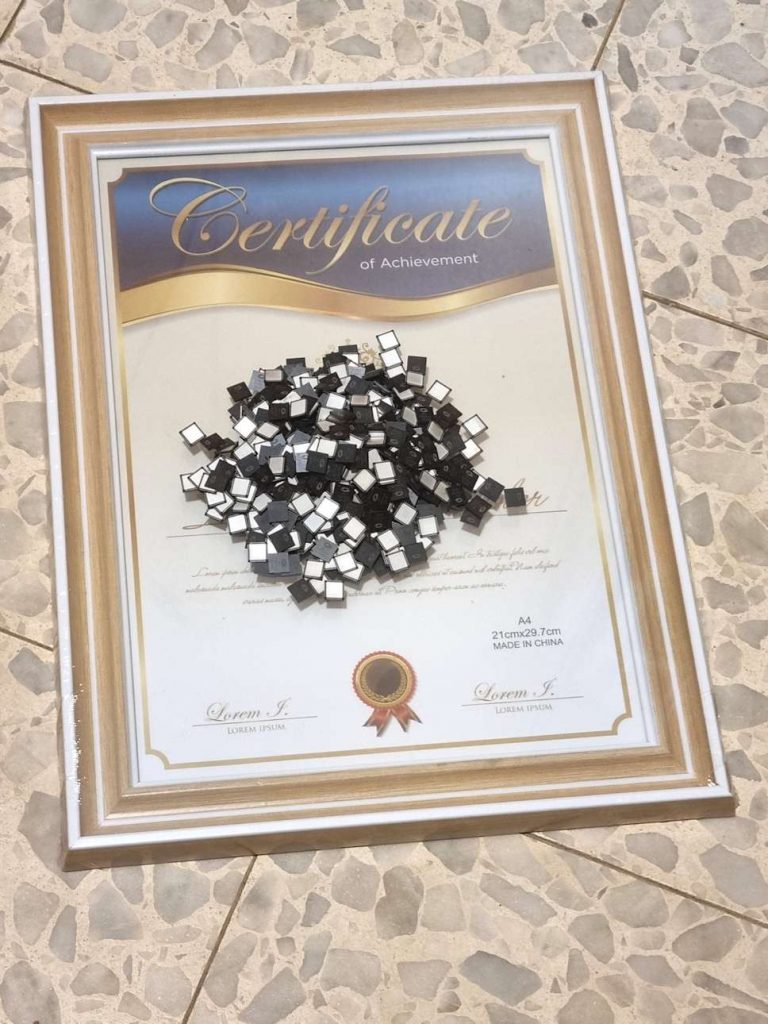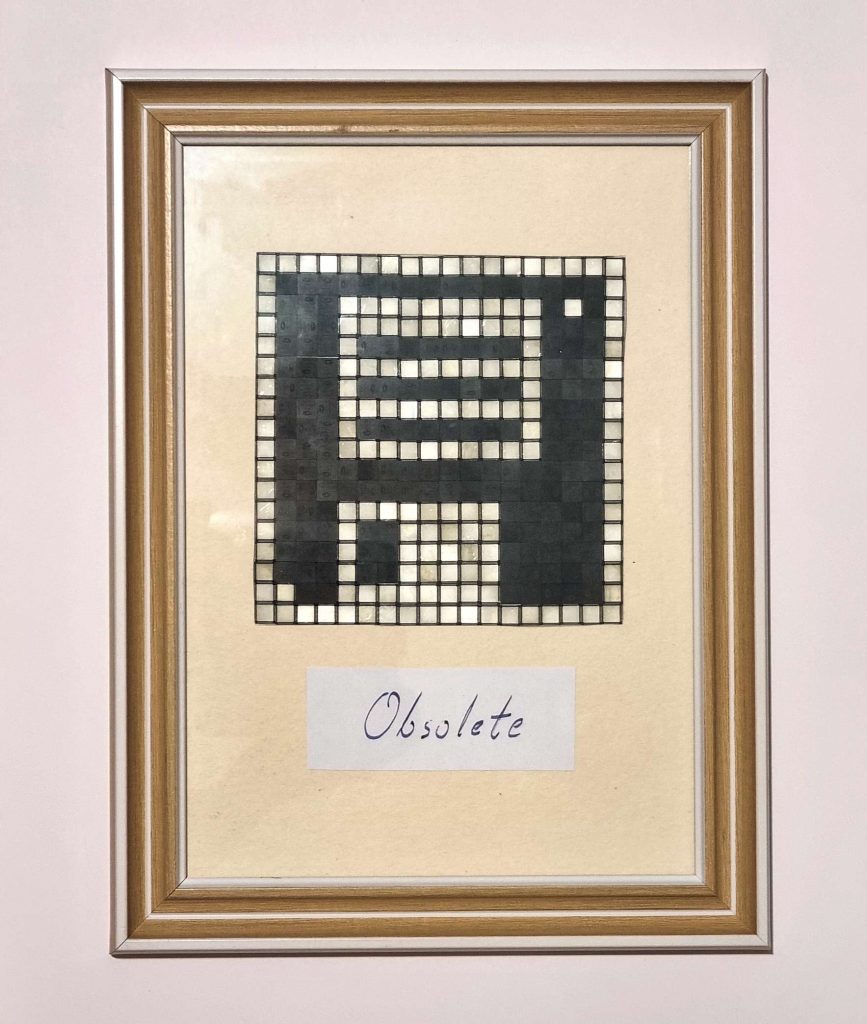What do you do with a pile of ICs worth thousands of dollars on paper, but which no one needs anymore?

Months ago I received a few dozen sleeves of ICs. They were never used, but their previous owner had no need for them. They all turned out to be PD69108, a PoE driver with 8 ports (not that I know what it even means). In theory, each unit costs over $13 (when bought in quantity), but you won’t find them in stock anywhere – not because of the global chip shortage, but simply because it’s an old model that’s not being manufactured anymore, commonly known as “Obsolete”.
Well, I had no use for them either, and no future use seemed likely, so I wrote a post in the appropriate EEVblog forum, offering to send them to anyone interested for shipping costs only. Three months passed and no one replied. I guess these ICs really are useless, but I still couldn’t bring myself to just throw them in the trash.
Seeing that these ICs were square (QFN package) with a huge silver-colored pad at the bottom, I quickly came up with the idea of “pixels” – using these chips as black and white pixels in an image. I had more than enough ICs for even a 32×32 design, but I decided to start with a more modest, 16×16 project. What do you draw with obsolete pixels? Another obsolete piece of technology, of course: a floppy disk. I found online a 16×16 black and white icon of a 3.5 inch diskette, made a couple of artistic adjustments to it and then went shopping.
A fancy A4 size wooden frame cost me around $3, and I added another dollar for a craft cardboard sheet, to allow for the IC’s thickness (around 0.8mm): A square cutout in this sheet will serve as an inner frame and a support for the pixels.
To enhance the visual separation of the image from the surrounding cardboard, I padded my original icon design with white pixels from all sides, making it a 18×18 image – meaning 324 ICs, or a little over $4200. It was obvious that this artwork will be called “Obsolete”*, so I wrote the name on a piece of paper using another obsolete tool – a fountain pen – and glued it to the cardboard; I wasn’t sure I’ll be able to write it well enough on the cardboard itself on the first trial and I didn’t have backup cardboard.
* “Ceci n’est pas obsolète” may seem clever, but it’s too expected.
To put it all together, I knew I’ll have to put the frame face down and assemble the “pixels” from the back, so I inverted the pixels colors in my photo editing software, mirrored the image, enlarged it and added a grid to help me see the individual pixels. The assembly itself according to this guide-image was easier and faster than I expected, and when it was done I used masking tape to secure all the chips in place.

And that’s it; my Obsolete masterpiece is done. It may not be the most impressive artwork in the world, it’s both useless and overly expensive, and most people will not understand it – but hey, that’s true for most modern art anyway, right?


